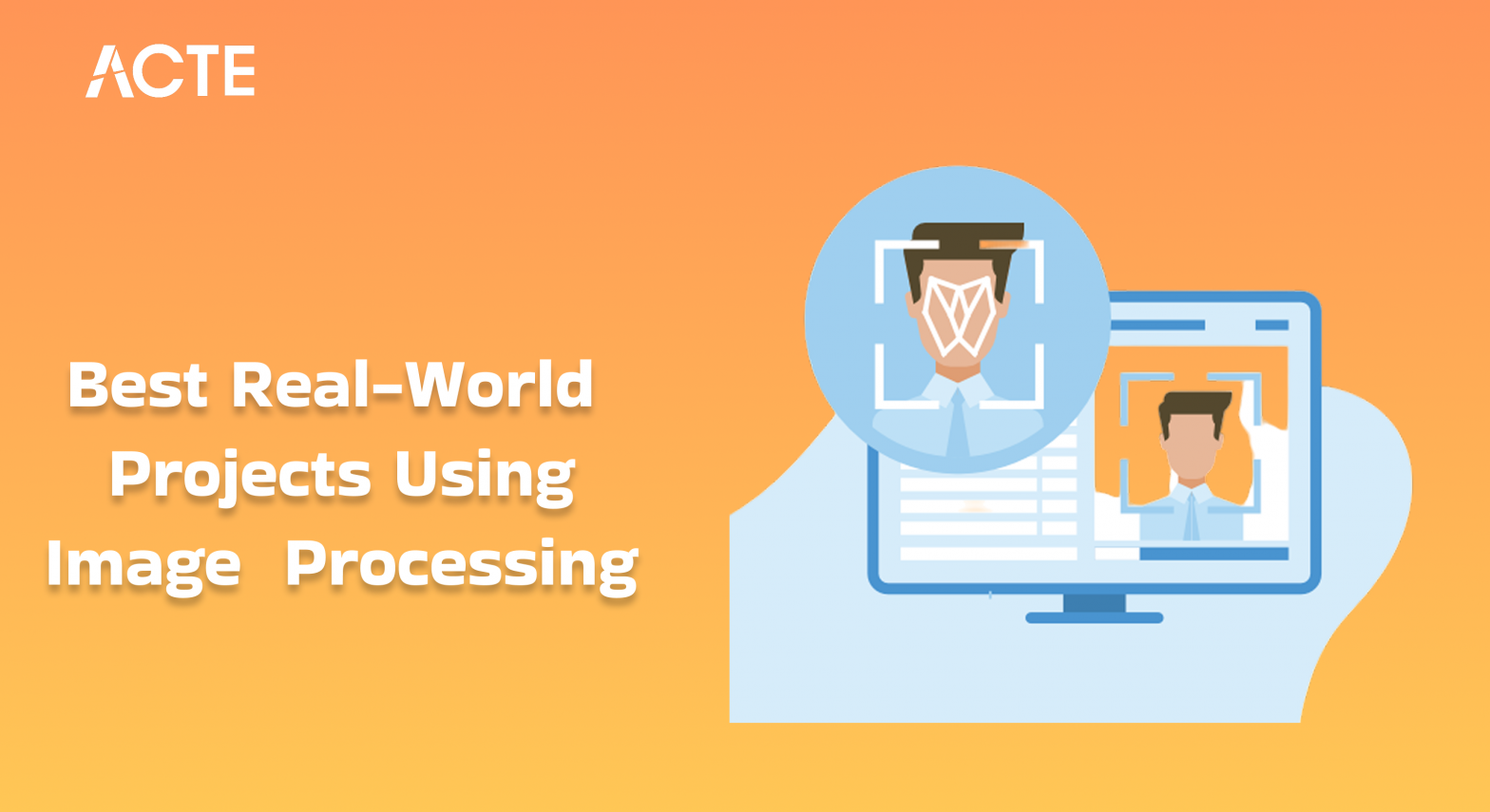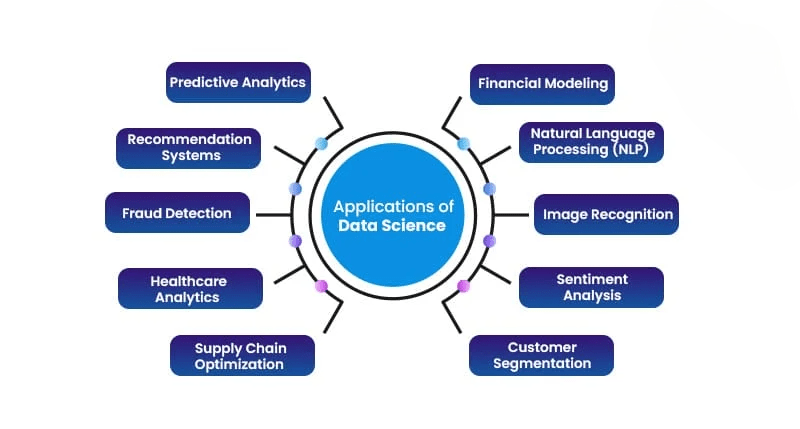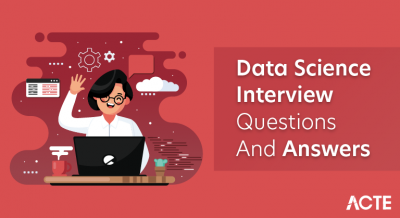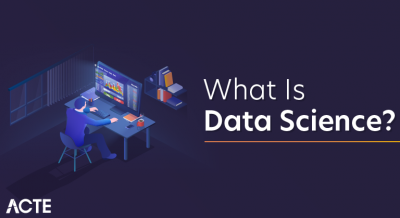
- Introduction to Image Processing
- Setting Up an Image Processing Environment
- Image Filtering and Edge Detection Project
- Face Recognition Using OpenCV
- Object Detection in Real-Time Applications
- Image Segmentation for Medical Imaging
- Handwritten Digit Recognition with Deep Learning
- Color Detection and Image Enhancement
- Optical Character Recognition (OCR) with Python
- Image Style Transfer Using Neural Networks
- License Plate Recognition System
- Future Trends in Image Processing
Introduction to Image Processing
Image processing is a technique that enhances, analyzes, and manipulates images using algorithms, playing a crucial role in sectors like medical imaging, security, and artificial intelligence. It involves methods such as filtering, segmentation, object detection, and recognition to extract meaningful information from visual data, enabling the identification of patterns and features within images. For those looking to advance their expertise and stay ahead in the field Data Science Training offers in-depth knowledge on techniques like image processing and its applications across various industries. As technology advances, image processing has become more sophisticated, allowing real-time applications in industries like healthcare, robotics, and automotive engineering. In healthcare, it aids in diagnosing conditions through tools like MRI and CT scans, while in security, it supports facial recognition and surveillance. In robotics, it helps machines understand their surroundings, and in automotive engineering, it contributes to the development of autonomous vehicles. The integration of image processing across various fields has transformed how machines interpret and interact with the world, enhancing security, improving medical diagnostics, and revolutionizing manufacturing processes with automated quality control. As these technologies continue to evolve, the potential of image processing to drive innovation and automation in numerous industries grows exponentially.
Would You Like to Know More About Data Science? Sign Up For Our Data Science Course Training Now!
Setting Up an Image Processing Environment
To begin with image processing, it is important to establish the right environment. Python is the most commonly used programming language, with libraries like OpenCV, NumPy, and Pillow offering a wide range of tools for manipulating, enhancing, and analyzing images. Setting up the environment involves installing Python, creating a virtual environment, and using pip to install the necessary libraries. For more advanced, deep learning-based image processing, frameworks such as TensorFlow and PyTorch are popular choices. These frameworks enable the creation of powerful neural networks capable of analyzing and interpreting images with exceptional accuracy. Additionally, tools like Jupyter Notebook provide an interactive platform that simplifies the development process, allowing for easy visualization and debugging of image processing applications. For a comprehensive start and deeper understanding, Learn Data Science to build the skills needed for working with these tools effectively. The combination of these libraries and tools offers a solid foundation for anyone looking to dive into the world of image processing

Image Filtering and Edge Detection Project
Image filtering is an essential part of image processing, primarily used to enhance image quality and reduce noise. One of the most important techniques in this field is edge detection, which identifies boundaries and outlines within an image. This helps in recognizing objects and important features. Several algorithms like Sobel, Prewitt, and Canny are commonly used for edge detection, each serving to highlight edges and improve image clarity. Below are some key points related to image filtering and edge detection:
- Image Filtering: It involves processes that enhance images by removing noise or unwanted details, improving clarity for further analysis.
- Edge Detection: This technique focuses on identifying boundaries in an image, making it easier to distinguish objects and features. It is widely used in visual recognition systems. Common Edge Detection Algorithms:
- Sobel: Highlights edges by calculating gradients in both horizontal and vertical directions.
- Prewitt: Similar to Sobel, but with a different method for computing gradients.
- Canny: A multi-stage algorithm known for its precision in detecting edges and reducing noise.
- Fingerprint Recognition: Identifying the ridges and valleys in fingerprints.
- Traffic Sign Detection: Recognizing traffic signs based on their boundaries.
- Automated Vehicle Navigation: Helping vehicles detect obstacles and navigate safely by recognizing edges in the environment
Edge detection is crucial in many real-world scenarios, such as:
These techniques are pivotal in many modern systems that rely on visual data for decision-making and automation.
Face Recognition Using OpenCV
Face recognition is a popular application of image processing, commonly used in security systems and social media platforms. OpenCV offers robust tools for face detection and recognition, including Haar cascades and deep learning-based techniques like the Dlib library. A typical project in this domain involves building a real-time face recognition system using a webcam. By leveraging pre-trained deep learning models such as FaceNet or DeepFace, high accuracy in detecting, recognizing, and verifying faces can be achieved. These systems have a wide range of applications, from enhancing security in access control systems to automating attendance tracking and providing personalized user experiences. For a broader understanding of how such technologies contribute to organizational success, Learn key roles of a skilled data scientist in business Face recognition technology continues to evolve, enabling more reliable and efficient identification processes in various industries.
Do You Want to Learn More About Data Science? Get Info From Our Data Science Course Training Today!
Object Detection in Real-Time Applications
Object detection is a vital component of computer vision, enabling machines to identify and locate objects within images or videos. This technology has a wide range of applications, including surveillance systems, autonomous vehicles, and retail analytics. The use of advanced techniques like YOLO (You Only Look Once), SSD (Single Shot MultiBox Detector), and Faster R-CNN allows for real-time object detection with high accuracy and efficiency. These techniques rely on deep learning models to perform object detection by analyzing the visual data, classifying objects, and predicting their locations in a single pass. Implementing object detection requires several steps, including training a model on a labeled dataset, optimizing the model’s performance, and fine-tuning it for specific tasks. Once the model is ready, it can be deployed in real-time applications to perform tasks like recognizing pedestrians in autonomous vehicles or tracking products in retail analytics. To stay competitive in this fast-evolving domain, Build a Career in Data Science Today and gain the skills needed to work with cutting-edge technologies. To further enhance performance, object detection models are often integrated with hardware accelerators like GPUs and TPUs, which help speed up the processing time, making it feasible to use in dynamic environments. This integration allows real-time detection in systems like robotics, security surveillance, and smart traffic management. In robotics, for instance, object detection helps machines navigate and interact with their environment, while in security surveillance, it allows for the automated monitoring of areas by identifying potential threats or suspicious activities. Similarly, in smart traffic management, object detection can be used to monitor vehicle movements and optimize traffic flow. As these technologies continue to evolve, real-time object detection will play an even more significant role in various industries, making systems more intelligent and responsive.

Image Segmentation for Medical Imaging
Medical imaging plays a critical role in diagnosing and analyzing abnormalities in medical scans, with image segmentation being a key technique. Segmentation helps isolate regions of interest, such as tumors or anomalies, to aid in diagnosis. Various methods, including thresholding, region-based segmentation, and advanced deep learning models like U-Net, are commonly employed in medical imaging applications. While image processing is crucial in healthcare, those starting in AI can also explore foundational areas like NLP Projects for Beginners to build a well-rounded understanding of data science and machine learning techniques. Below are the key points related to medical image segmentation:
- Importance of Medical Imaging: It helps detect and analyze abnormalities in medical scans, enabling better diagnosis and treatment planning.
- Thresholding: A technique that segments images by separating pixel values above or below a certain threshold.
- Region-Based Segmentation: Identifies and isolates areas of interest based on the similarity of pixel properties.
- Deep Learning Models (e.g., U-Net): Advanced AI-based models used for precise segmentation, especially in complex medical images.
- Project Focus: The project involves applying segmentation methods to MRI or CT scan images to highlight regions such as tumors or anomalies.
- AI-Powered Segmentation: By using AI models, medical professionals can achieve early and accurate diagnoses, such as detecting cancer at its initial stages.
- Applications in Disease Diagnosis: Early detection of diseases, like cancer, significantly improves patient outcomes and treatment effectiveness.
- Biomedical Research: Image segmentation also plays a role in research, helping scientists analyze cell structures, tissues, and other biological samples.
- Primary Function: OCR converts text from images into machine-readable formats, making it easier to store, search, and edit content. Common Applications:
- Document Scanning: Automates the digitization of paper-based records.
- License Plate Recognition: Used in traffic systems for vehicle identification.
- Printed Material Digitization: Helps convert books, forms, and receipts into digital text. Popular Libraries:
- Tesseract-OCR: A widely used open-source OCR engine with support for multiple languages and handwriting recognition.
- OpenCV: Often used alongside OCR for image pre-processing to enhance recognition accuracy.
- Project Idea: Build an OCR system that extracts and converts text from scanned documents into editable files such as Word or PDF. Advanced Techniques:
- Recurrent Neural Networks (RNNs): Improve recognition of complex layouts, cursive handwriting, and multilingual text.
- Deep Learning Integration: Increases accuracy, especially in challenging scenarios like noisy backgrounds or low-resolution images.
Image segmentation continues to be a critical tool in both clinical and research settings, enhancing the accuracy of diagnoses and advancing medical research.
Handwritten Digit Recognition with Deep Learning
Handwritten digit recognition is a widely pursued deep learning project that focuses on the classification of handwritten numbers using convolutional neural networks (CNNs). It serves as an excellent introduction to image classification tasks and is commonly developed using the MNIST dataset, which contains thousands of labeled images of digits from 0 to 9. This dataset provides a standardized benchmark for training and testing models in this domain. Tools like TensorFlow and Keras make it easier to build and train CNN models, offering high-level APIs and pre-built functions that streamline the development process. These models typically consist of multiple layers, including convolutional layers for feature extraction, pooling layers for dimensionality reduction, and fully connected layers for final classification. Through this architecture, the network learns to detect patterns such as curves, lines, and edges that distinguish one digit from another, resulting in highly accurate recognition capabilities. For those aiming to build a strong foundation in this field, Learn Python for Data Science and Web Jobs to gain practical skills applicable across industries. The effectiveness of CNNs in this area has led to their widespread adoption in real-world applications such as postal automation, where they assist in reading zip codes; bank check verification, where they help interpret handwritten amounts; and digital form processing, where they automate data entry by accurately recognizing hand-filled numbers. With continued advancements in deep learning and access to powerful computational resources, handwritten digit recognition has become a foundational project that not only demonstrates the capabilities of neural networks but also serves as a gateway to more complex image processing and pattern recognition tasks.
Want to Pursue a Data Science Master’s Degree? Enroll For Data Science Masters Course Today!
Color Detection and Image Enhancement
Color detection is an important application in the fields of industrial automation and computer vision, enabling systems to identify and respond to specific colors within images or video streams. This process relies on techniques such as histogram analysis and transformations within the HSV (Hue, Saturation, Value) color space, which allow for more accurate and intuitive color segmentation compared to the traditional RGB model. In addition to detecting colors, image enhancement techniques like histogram equalization and contrast stretching are often applied to improve the visual quality and clarity of the input image, ensuring more reliable detection results. For those looking to advance their expertise, Data Science Training offers in-depth knowledge on these techniques and their applications. A typical project in this domain could involve developing a tool that identifies and highlights specific colors in an image, making them more distinguishable for further processing or analysis. Such tools are highly useful in practical scenarios like food quality inspection, where color can indicate ripeness or spoilage; traffic light detection in autonomous vehicles, where recognizing the correct signal color is critical for safe navigation; and augmented reality applications, where color cues can be used to trigger interactive elements. The combination of color detection and image enhancement techniques enables systems to better interpret visual data, supporting automation, safety, and interactive technology in various real-world contexts.
Optical Character Recognition (OCR) with Python
Optical Character Recognition (OCR) is a powerful technology that transforms images containing text into machine-readable and editable formats. It plays a significant role in digitizing printed materials and automating data extraction from physical documents. OCR is widely used in various applications such as document scanning, license plate recognition, and text extraction from books or forms. With the help of open-source libraries like Tesseract-OCR and OpenCV, implementing OCR in Python has become both accessible and efficient. Below are the key points related to OCR technology:
OCR technology continues to evolve, offering smarter solutions for automating and streamlining the way we process text from physical documents.
Go Through These Data Science Interview Questions & Answer to Excel in Your Upcoming Interview.
Image Style Transfer Using Neural Networks
Image style transfer is an advanced deep learning technique that allows the artistic style of one image to be applied to the content of another, creating a visually unique and aesthetically compelling result. This process leverages convolutional neural networks (CNNs) and pre-trained models like VGG-19 to extract and manipulate the style and content representations of images. By analyzing the structure of one image (content) and the visual patterns of another (style), the model can merge them to produce a new image that maintains the original structure while adopting the artistic characteristics of the style image. The core of style transfer lies in its ability to separate and recombine content and style features using neural networks. During implementation, the model computes the content loss and style loss to optimize the generated image, ensuring it closely resembles the desired style while preserving the content layout. This technique has gained popularity in various creative and technological fields. In digital art creation, it empowers artists and designers to experiment with different styles, such as transforming a photograph into a Van Gogh-like painting, without manual effort. In media production, style transfer enhances visual storytelling by adding distinctive artistic elements to visuals. Furthermore, in augmented reality (AR) applications, it contributes to immersive user experiences by dynamically altering visual elements in real time. As adoption increases and more professionals enter the field, understanding Top Data Scientist Salaries and Key Skills becomes essential for anyone pursuing a career that blends creativity with AI. As the technology continues to advance, style transfer is increasingly being integrated into mobile apps, video editing tools, and interactive platforms, giving both professionals and hobbyists new ways to express creativity. With its growing adoption, image style transfer is transforming how we think about visual media, bridging the gap between artificial intelligence and artistic expression.
License Plate Recognition System
License plate recognition is used in automated toll collection, parking management, and law enforcement. This system captures images of license plates, processes them using OCR techniques, and extracts vehicle registration numbers. Implementing a license plate recognition system requires combining image preprocessing, segmentation, and OCR algorithms to ensure accuracy and reliability. With advancements in deep learning, modern license plate recognition systems can handle different lighting conditions, angles, and plate formats, making them highly efficient.
Future Trends in Image Processing
The field of image processing is advancing at a remarkable pace, fueled by rapid developments in artificial intelligence and deep learning. These technologies are unlocking new possibilities across industries, making image-based systems more intelligent, responsive, and efficient. Among the most notable emerging trends are AI-powered image enhancement, which improves image quality beyond traditional techniques; real-time video analytics, which allows for instant decision-making in surveillance and monitoring; 3D image reconstruction, which enhances depth perception in fields like robotics and medical imaging; and automated medical diagnostics, which enable early and accurate disease detection through AI-driven analysis of medical scans. For those looking to deepen their knowledge, Data Science Training offers comprehensive learning on these emerging technologies and their applications. As computational power grows and algorithms become more sophisticated, image processing applications are expected to become even more accurate, faster, and more versatile. Future advancements will be further accelerated by cutting-edge technologies such as quantum computing, which could drastically increase processing capabilities; edge AI, which brings intelligence to local devices for faster real-time analysis; and federated learning, which enables model training across distributed devices while maintaining data privacy. However, the future of image processing extends beyond mere automation. It also involves the development of ethical and responsible AI systems that minimize bias, ensure fairness, and promote transparency. As smart cities evolve, biometric security becomes more prevalent, and intelligent healthcare solutions expand, image processing will be at the core of these innovations. Its role in shaping the technological landscape of the future is critical, influencing everything from urban infrastructure to personal privacy and public health.




